Convert Month Name to Number
It’s feasible that we’ll need to convert a month to a number while using Microsoft Excel for a variety of reasons. We frequently have to convert to numbers for computation purposes.
There are 3 ways to convert Month Name to Number. They are-
- Month function
- Combine MONTH and DATEVALUE Function
- TEXT Function
Use MONTH Function:
It’s relatively normal to convert a date to a month name, however there may occasionally be a requirement to convert a month name to the appropriate month number.
For example, you might want to transform the month name January, June, or July in a cell to the corresponding month numbers (which would be 1 for January, 6 for June or 7 for July).
It’s possible that you need to do this to just satisfy a formatting requirement, or perhaps you need to use it to make some computations.
Procedure of converting Month Name to Number using MONTH Function:
Step 1: The first step is to select a cell. I’ve chosen this cell (D2), outlined in Red below.
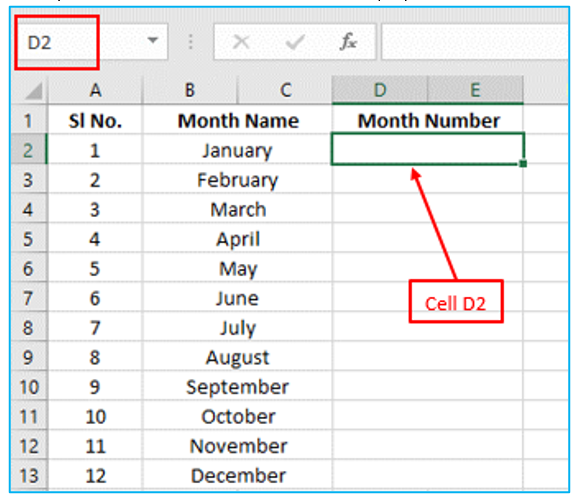
Step 2: Apply the formula for MONTH Function. The formula for the MONTH Function is outlined in Red below.
Here, The MONTH function returns a number from a given date that ranges from 1 to 12.
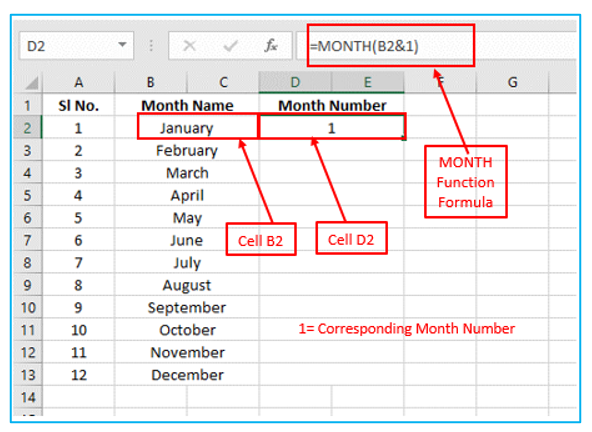
Step 3: After applying, to fill all the cells, pull the “Fill Handle” further. The result is outlined in Red below.
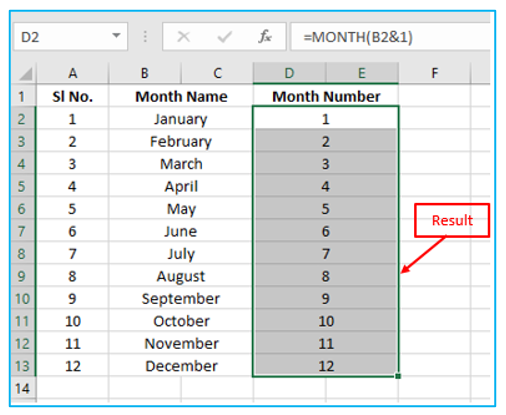
Using MONTH Function, you can also find Month by number, Month with number, what number month is July, what month number is June, what number month is June.
Combine MONTH and DATEVALUE Functions:
Procedure of converting Month Name to Number by combining MONTH Function and DATEVALUE Function:
Step 1: The first step is to select a cell. I’ve chosen this cell (D2), outlined in Red below.
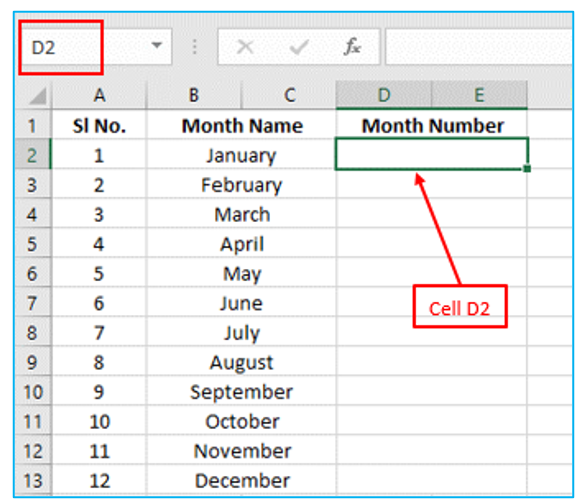
Step 2: Combining the formula for MONTH Function and DATEVALUE Function. The combining formulas is outlined in Red below.
Here, within the given string, the DATEVALUE function produces a date-time code.
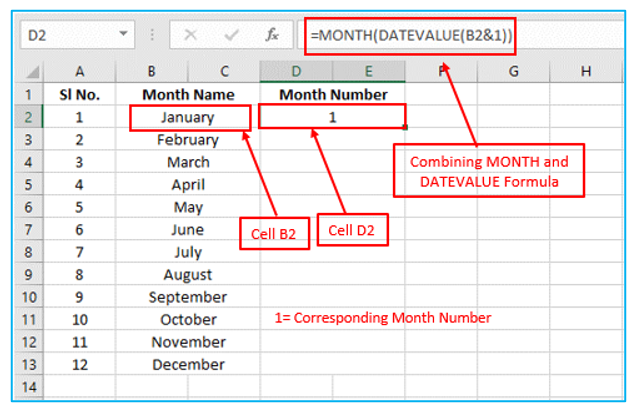
Step 3: After combining, to fill all the cells, pull the “Fill Handle” further. The result is outlined in Red below.
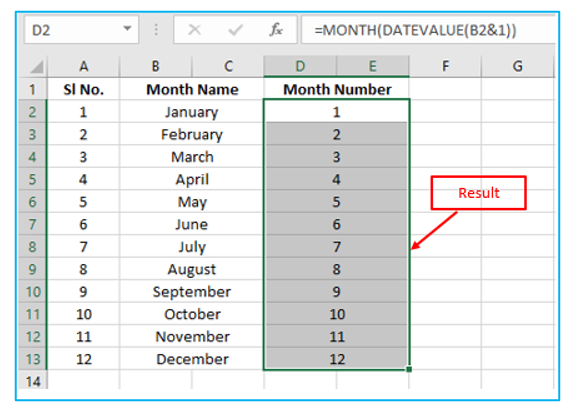
Apply Excel TEXT Function to Covert Month to Number:
It’s possible to come across dates in different cells while using Microsoft Excel. You must now be considering how to transform them. Not to worry. To obtain your answer, follow the steps below.
Step 1: First of all, choose all dates and press Ctrl+1 on the Keyboard. A new window is named “Format Cells”, outlined in Blue below.
 Step 2: Select custom and write “mmmm” in the “Type” section/box and then click ok to continue, outlined in Red below.
Step 2: Select custom and write “mmmm” in the “Type” section/box and then click ok to continue, outlined in Red below.
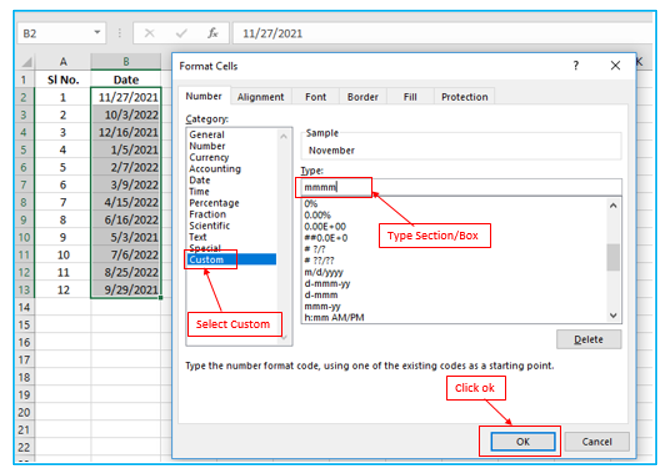
The result is outlined in Red below.
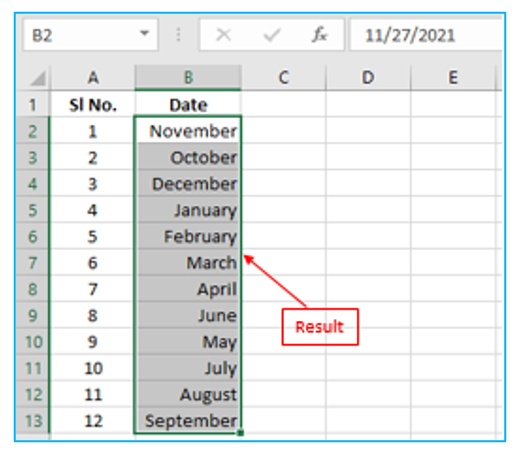
Step 3: Select the cell C2, outlined in Red below.
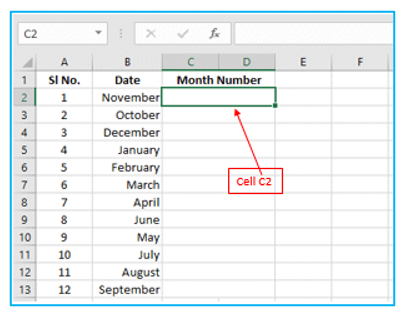
Step 4: Apply the formula for TEXT Function. The formula for the TEXT Function is outlined in Red below.
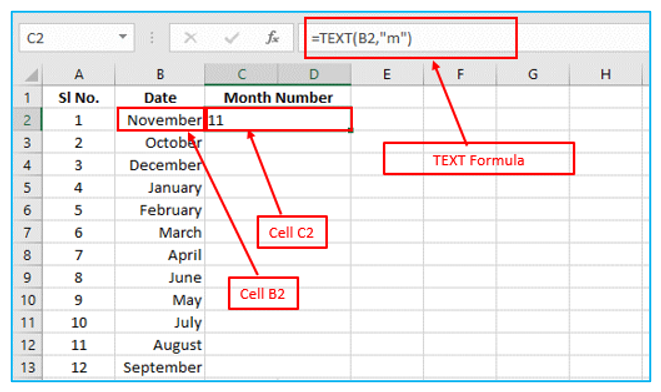
Step 5: After applying formula, to fill all the cells, pull the “Fill Handle” further. The result is outlined in Red below.
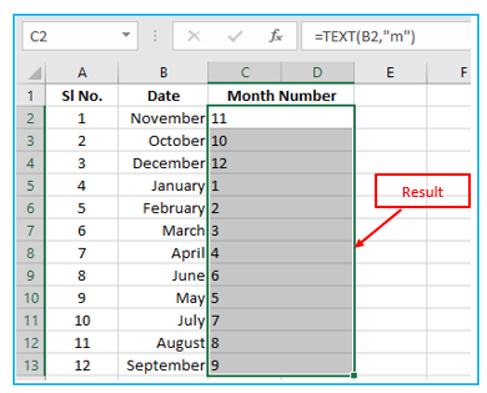
You may be interested:
